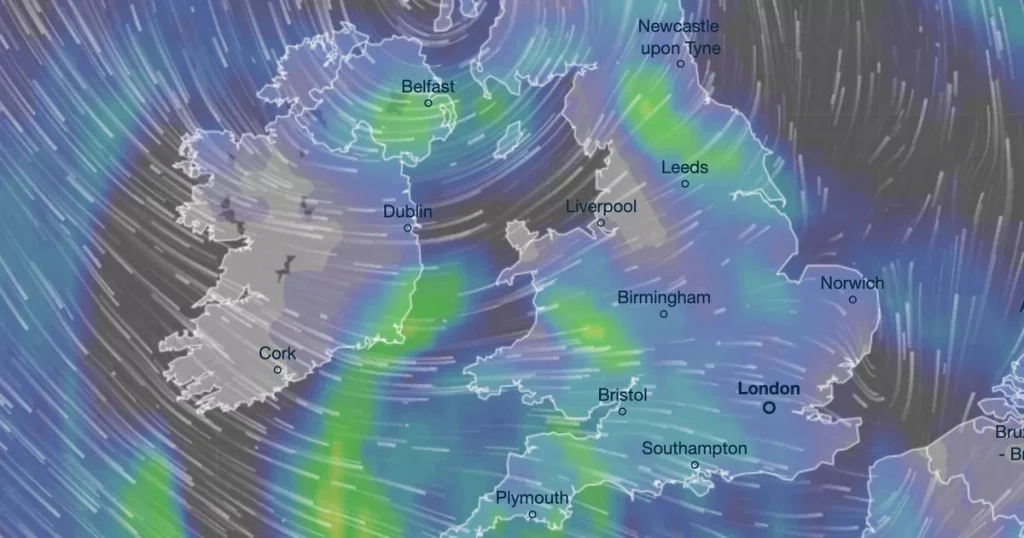A major low-pressure weather system was forecasted to hit the UK, with rain and snow predicted across England, Wales, Northern Ireland, and Scotland. Snowfall rates of over 4cm per hour were expected in Scotland. The system was expected to make landfall in the north of England and move southeast on the weekend of April 27th. By Sunday, the storm was positioned between Northern Ireland and Scotland, bringing heavy snowfall to the region.
The weather system originated off the south coast of Greenland and moved east toward Iceland before heading south over the UK. The storm was forecast to bring significant amounts of snow, especially in Scotland. In Wales and the northwest of England, snow was expected to fall by Sunday evening. The system was projected to move beyond the southwest of England and into the Atlantic Ocean by Monday, April 29th. The Met Office’s long-range forecast predicted unsettled conditions with wet weather between April 25th and May 4th.
Wet and cold conditions were anticipated as the low-pressure system became more dominant, leading to rain and snow across various parts of the UK. Eastern coasts were likely to experience onshore winds, making it feel colder than average. Throughout early May, drier conditions were expected in the north, while rain was more likely in the south. Before the storm, the UK was forecasted to have relatively settled conditions with a cool breeze. The Met Office issued a light rain warning for the East, with near-average temperatures for late April.
The storm’s projections showed heavy rainfall and significant snowfall in various regions, with Scotland expected to receive the most snow accumulation. The forecasted low-pressure system was expected to bring adverse weather conditions to the UK, leading to wet and cold conditions. The system’s movement over a 24-hour period indicated a shift towards the UK and eventually moving beyond the southwest into the Atlantic Ocean. The Met Office’s outlook for early May highlighted a potential north-south split in weather conditions, with wetter weather in the south and drier conditions in the north. Before the storm’s arrival, settled but cool conditions were expected across the UK.


